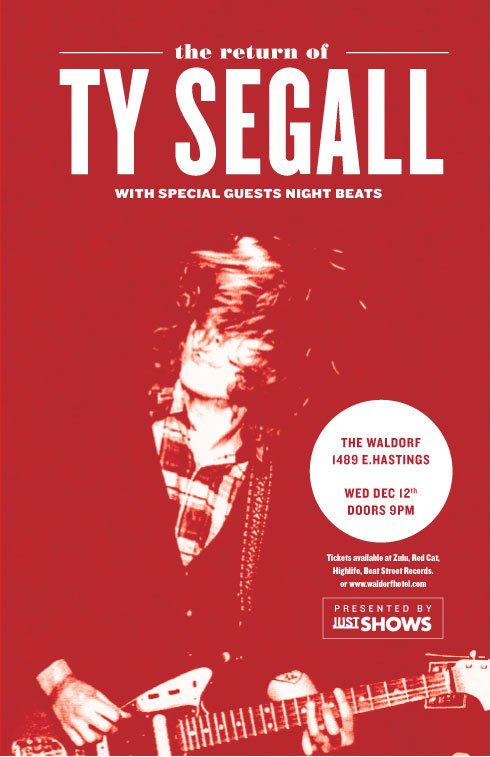The Waldorf Hotel is one of the most storied buildings in Vancouver. Built in 1947, the Waldorf was designed by Mercer & Mercer Architects in an Art Moderne style. However, one fateful trip to Honolulu in 1953 changed everything. It was then and there that owner Bob Mills purchased eight original black velvet paintings by Edgar Leeteg.
An unusual character, father of American velvet painting and longtime sufferer of elephantiasis and venereal disease, Leeteg famously said, “My paintings belong in a gin mill, not a museum.” Indeed, that’s the kind of place where most of his paintings ended up, particularly his more risque works. Inspired by Polynesian culture, swept up in the exotica movement, Mills committed the Waldorf to Tiki, creating a Tiki lounge with bamboo paneling, thatched walls, fake palm trees, native drum bar stools, a ceiling painted like the night sky, and careful placing of four Leeteg paintings. The basement restaurant was decorated to suit, and the Waldorf quickly became one of the hottest joints in Vancouver.
Unfortunately, the rock ‘n’ roll phenomenon destroyed exotica in the early 60s, and the Waldorf began a slow decline that would last almost 40 years. Then, in 2010, an unlikely collaboration between musician Thomas Anselmi (Slow, Copyright), restaurateur Ernesto Gomez (Nuba), and architect Scott Cohen (Gastropod, Les Faux Bourgeois) secured a lease with the space, and re-envisioned it as hospitality/entertainment complex. After a three-month renovation, their dream came to fruition.
The renovation established new locations for the noted Lebanese restaurant Nuba and the Barbarella hair salon, and restored the Tiki bar to its former glory, complete with vintage JBL Lansing Hartfields speakers and a sizable vinyl collection. The former basement restaurant was converted to a cabaret for live music. Almost overnight, the Waldorf had once again become a cultural hub, attracting scenesters city wide to its obscure location in the no man’s land between the downtrodden downtown East side and the hippy haven of Commercial Drive, a clash of former opulence and present decay that, ironically, is perfect for seeing a sweaty rock ‘n’ roll show.
On the fateful evening of 12/12/12, Seattle’s Night Beats would take the stage first. Although lead guitarist/vocalist Lee Blackwell looked a bit like a younger, thinner John Belushi, he couldn’t sing as well as the Blues Brother by a country mile. Oddly enough, Blackwell played with the long end of his uncut string laying over the first five frets of his guitar, which seemed telling of their aesthetic. Although they had decent energy, hard-selling flashy, incomprehensible blues-garage riffs, they were a generally sloppy bunch. The hi-hat in drummer James Traeger’s kit fell apart during one track, but he kept tapping the pedal anyway for the rest of the song (likely in an effort to keep his timing), but the rhythm section often came off muddy anyway. To their credit, Night Beats tightened up as they went along, and their style was reasonably well-informed. They could use more practice, though, and they might want to consider warming up beforehand, so they can get some of the roughness out of the way before being put to the test.
Suffice to say, Ty Segall was the reason the Waldorf sold out this evening. Having sold out the same venue in May of the same year, his return to the city and venue had been highly publicized.
Segall would quickly prove the hype substantiated, launching into “Thank God for Sinners” (the opening track from his most recent album Twins), which instantly whipped the crowd into a fevered mosh that nearly devolved into ruthlessness. For some reason, one guy thought it was a good idea to mosh with a lit stick of incense. Seemingly drinkable beers were emptied willy-nilly, as a steady flow of people surged over the crowd, narrowly missing the low lighting of the cabaret. One plucky girl tried surfing, and in the course of her adventure, two different guys belly flopped on her head (she would try again in the encore). Three guys tried to crowd surf at once, nearly taking out half of the pit as they collapsed. Fifteen minutes into their set, in the middle of “My Head Explodes” from Goodbye Bread, a would-be stage diver knocked over Segall’s mic.
Following the mic incident, Segall was compelled to ask the crowd to take it easy. He implored, “Everybody be careful, please. Someone is bleeding already. Please, be careful. She’s okay, but think about it.” The rowdiness couldn’t be capped, though, and the band went with it. Guitarist Charles Moothart put on a party hat someone threw onstage, and later Segall fashioned a red shirt which was flung near him around his head like a bandana, saying it smelled “so fucking good” as he did so.
With longtime Segall collaborator Mikal Cronin turned away at the Canadian border again (the same thing had happened in May), Moothart ended up playing bass for most of the show. There were a couple moments when that didn’t work out. Moothart couldn’t quite get the bass line for “Tell Me What’s Inside Your Heart” and “Wave Goodbye” from Slaughterhouse, and had to switch for Segall’s lead guitar. Yet, these moments helped bring Segall’s raw talent into greater relief. Moothart is certainly no slouch on guitar, but when Segall plays, there is something intangible, something extra behind it all. Segall has that spark in his play that so few musicians work hard enough to achieve these days. It’s clear from Segall’s Popeye-thick arms that he works hard at what he does.
Granted, Segall doesn’t have the most beautiful voice, but it suits his style. It’s more about the raw passion and ecstatic execution than creating something traditionally beautiful. This notion was clearly demonstrated by the trio’s encore performance of “Paranoid” by Black Sabbath, done fast and loose as Segall played his guitar behind his head for the last half of the track. Indeed, Ty Segall may be one of the world’s last great rock ‘n’ roll performers.
